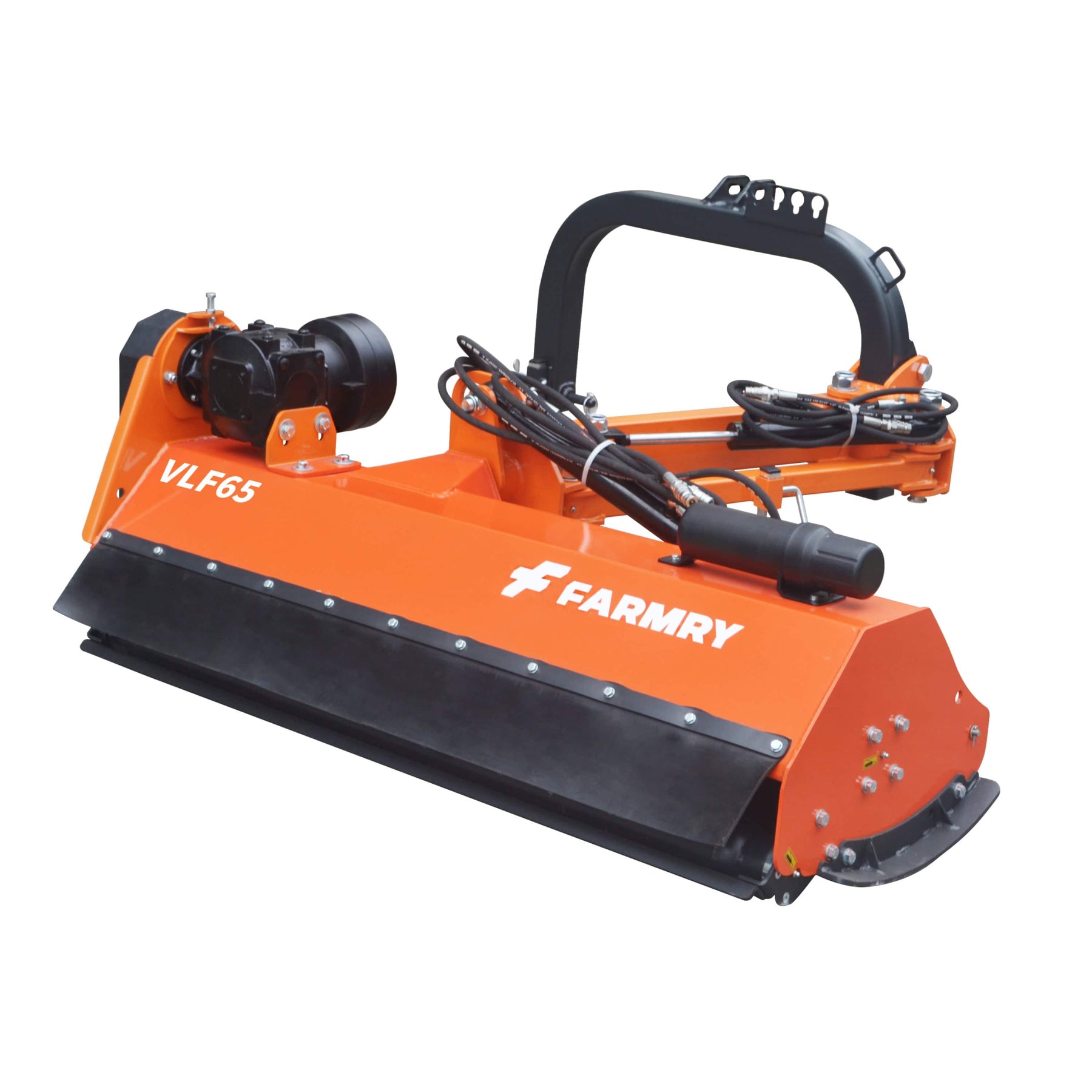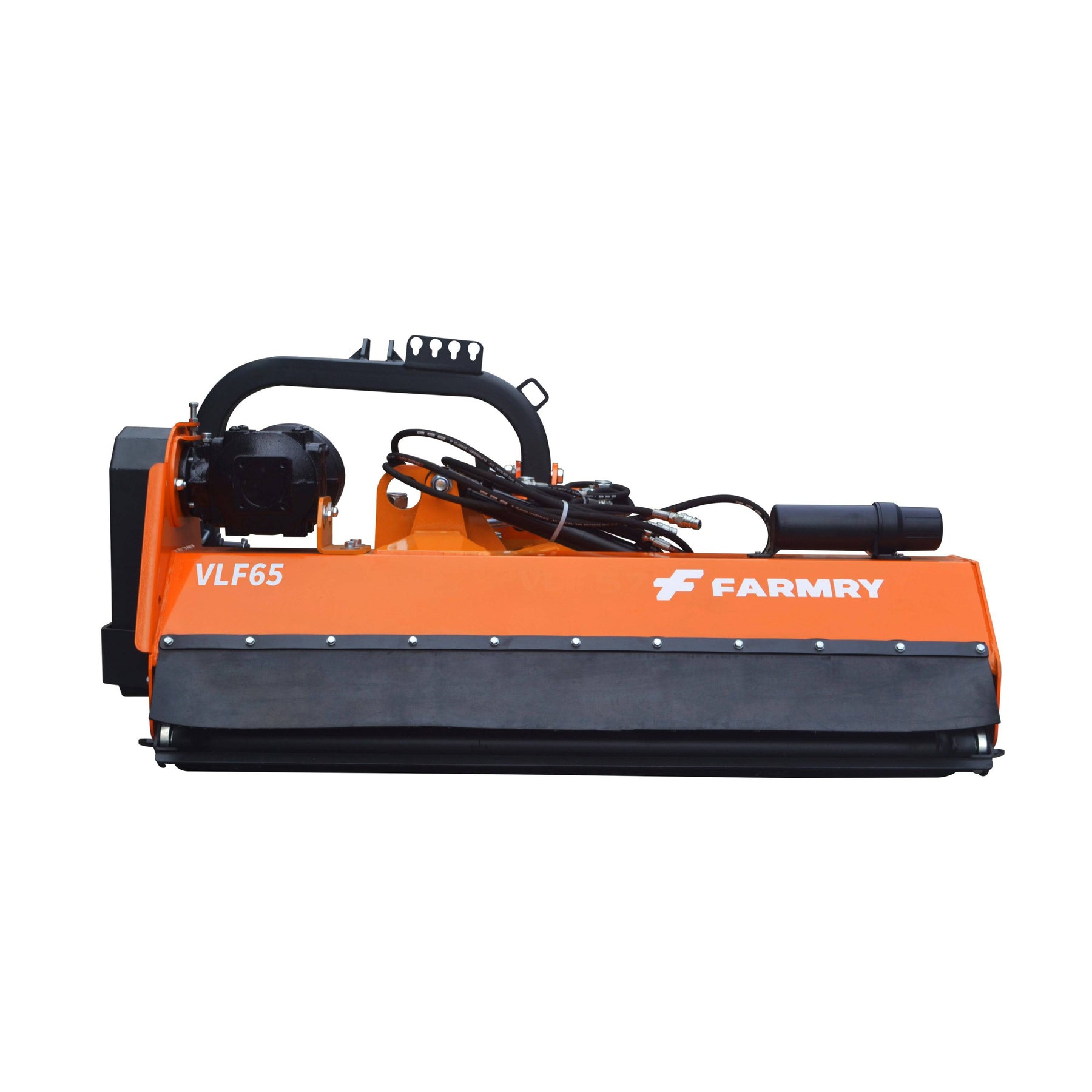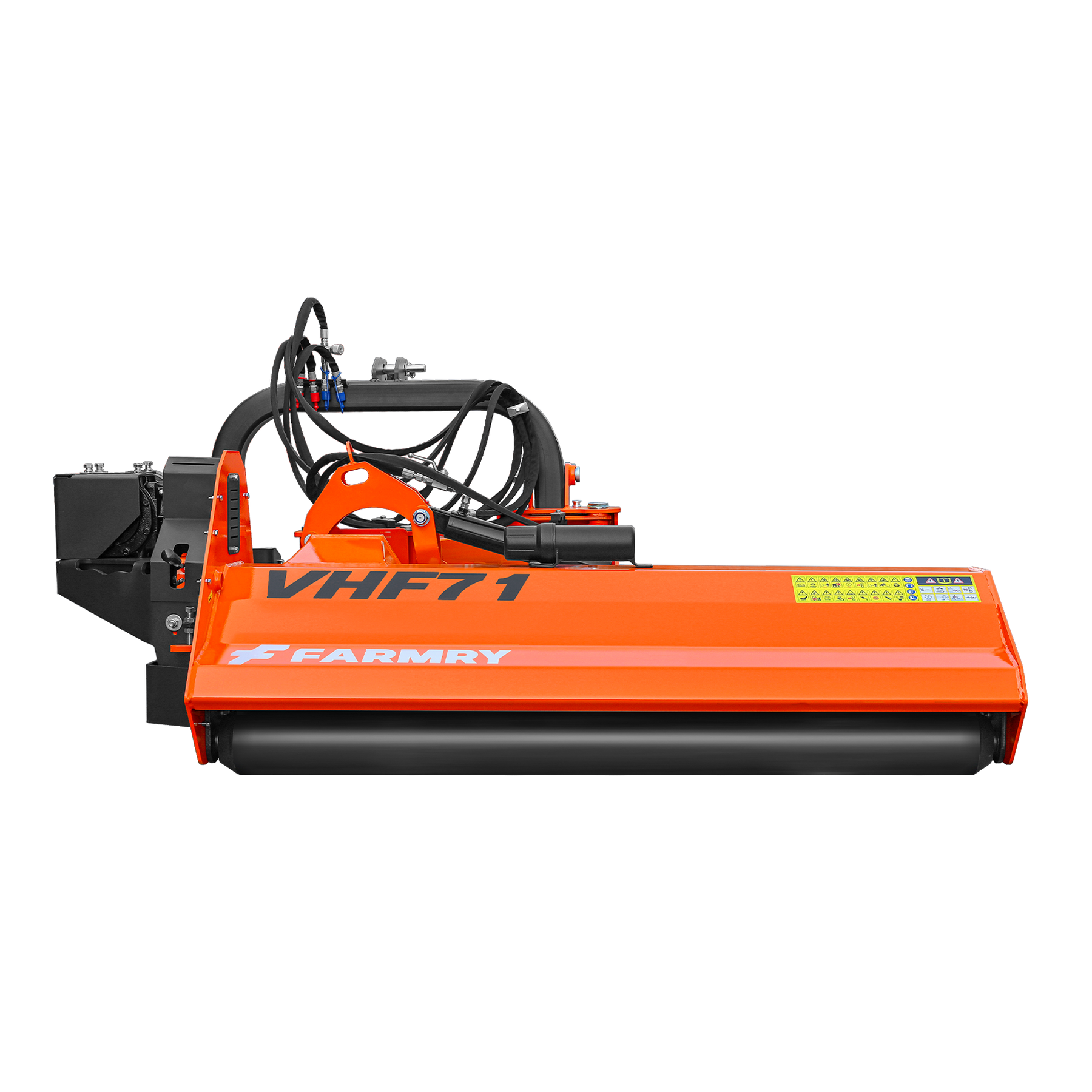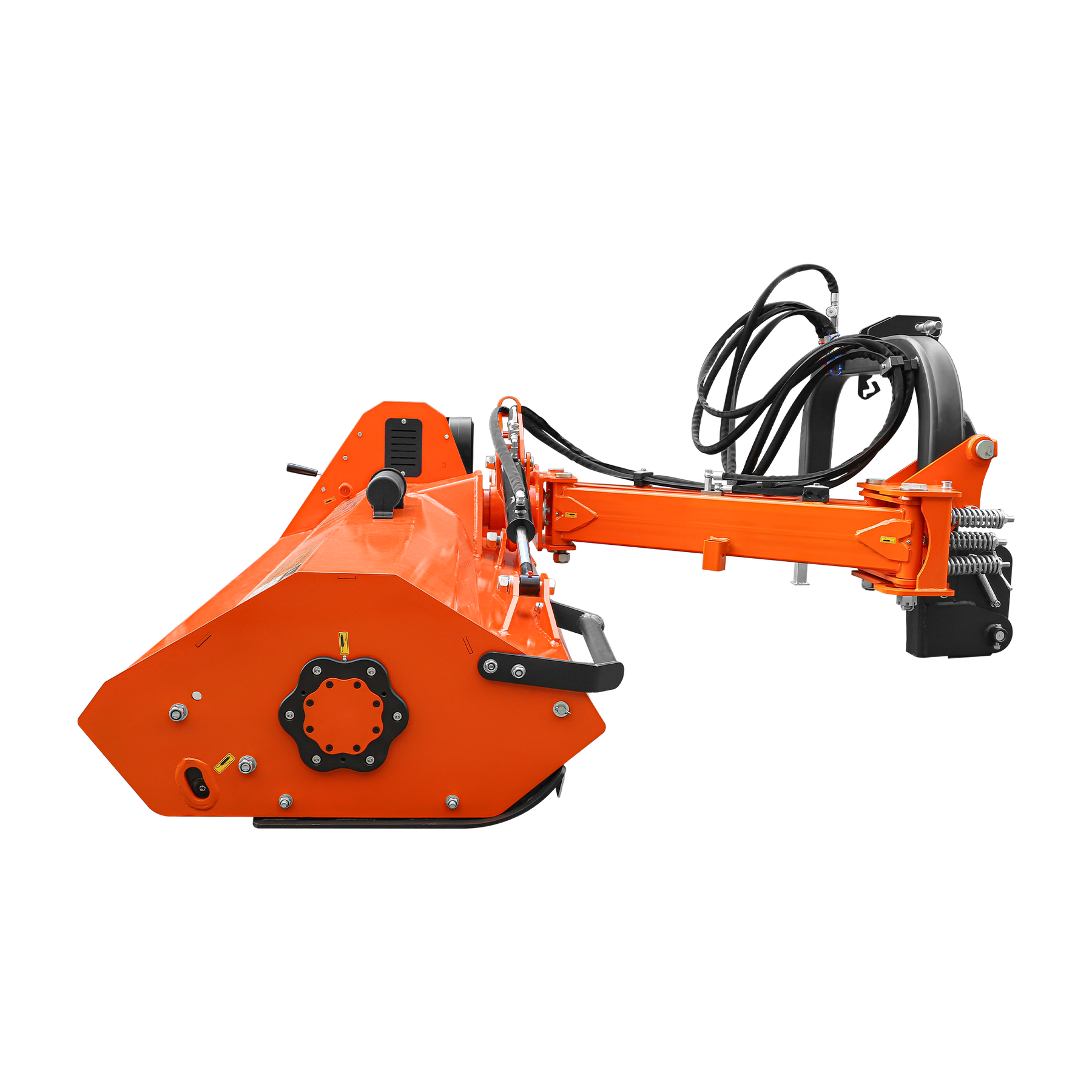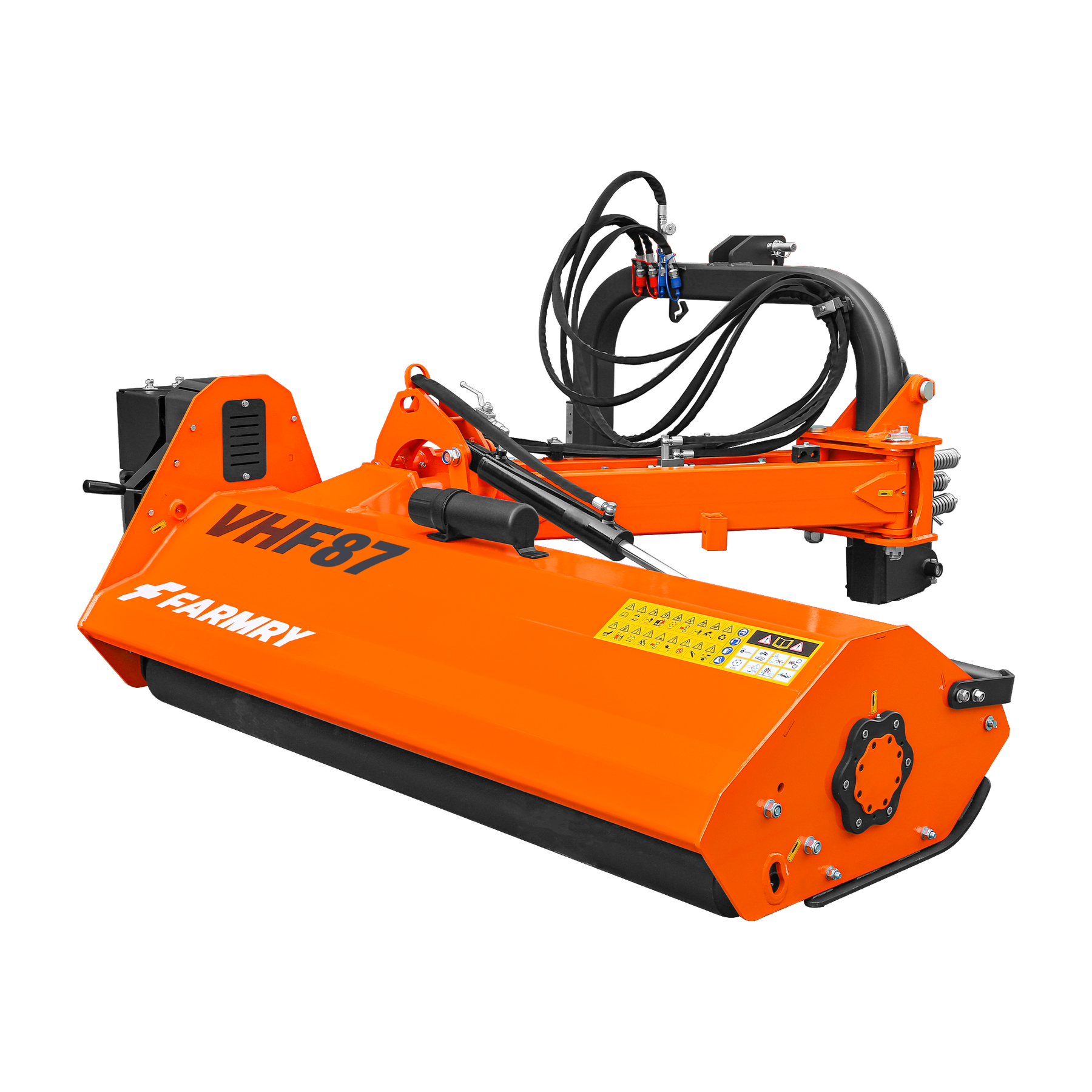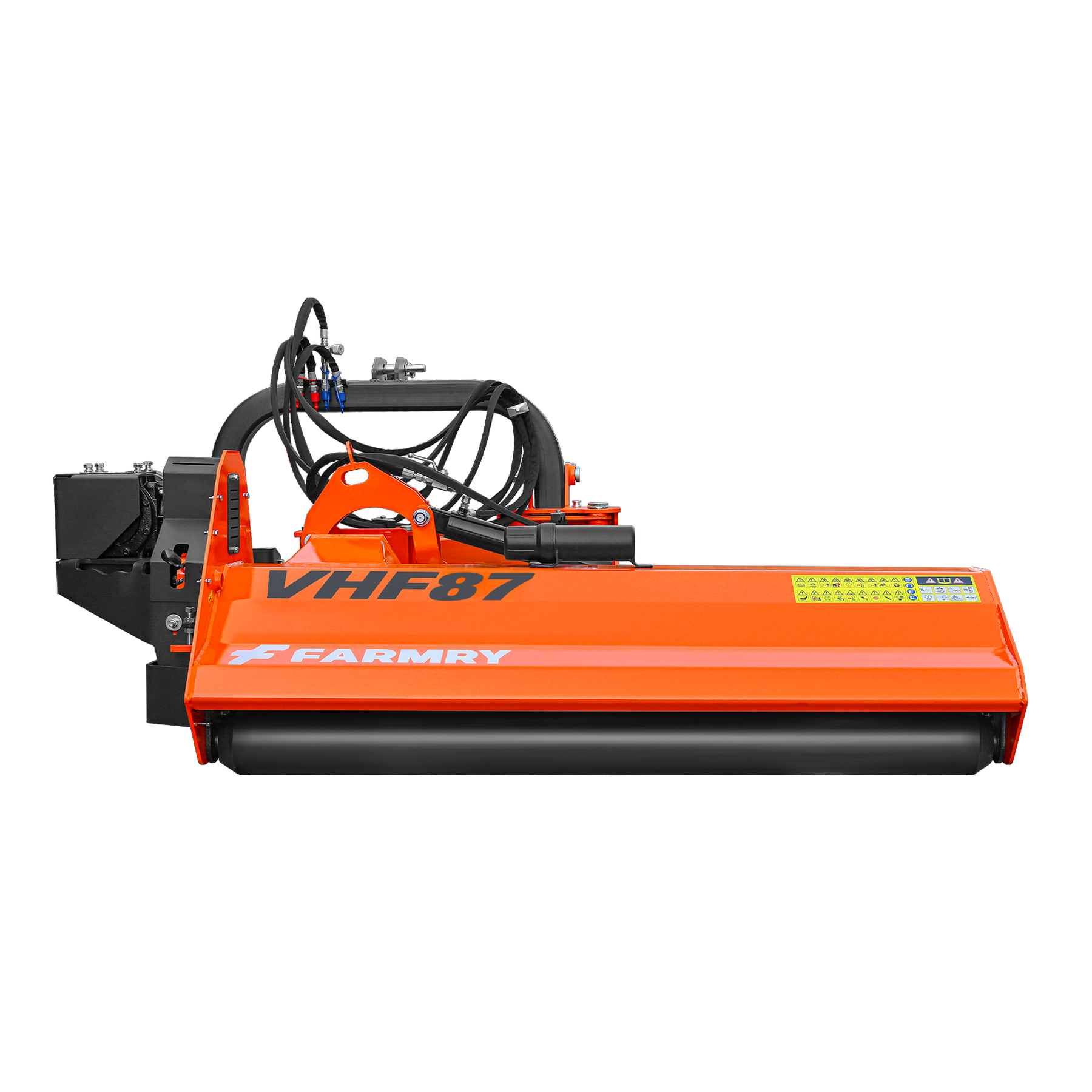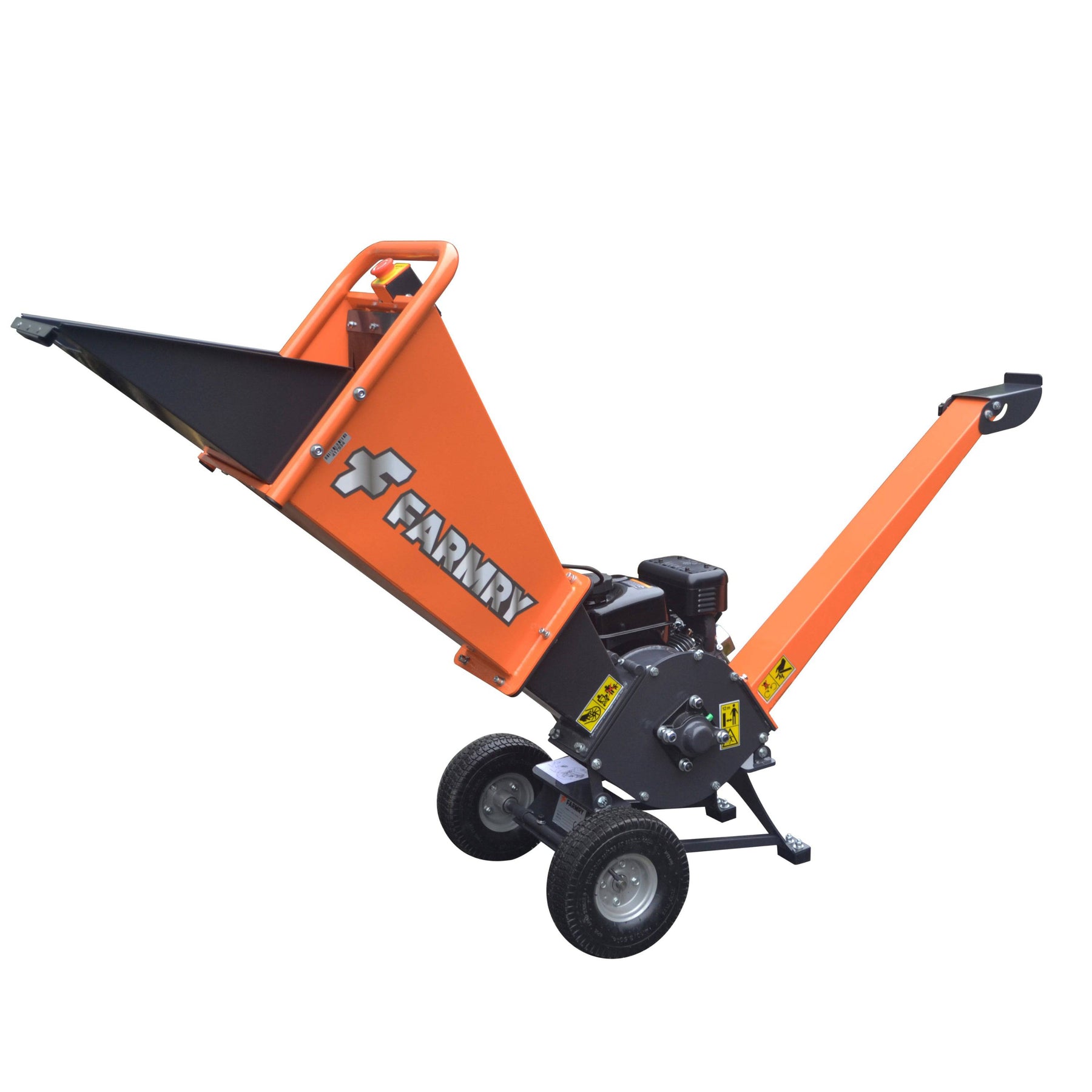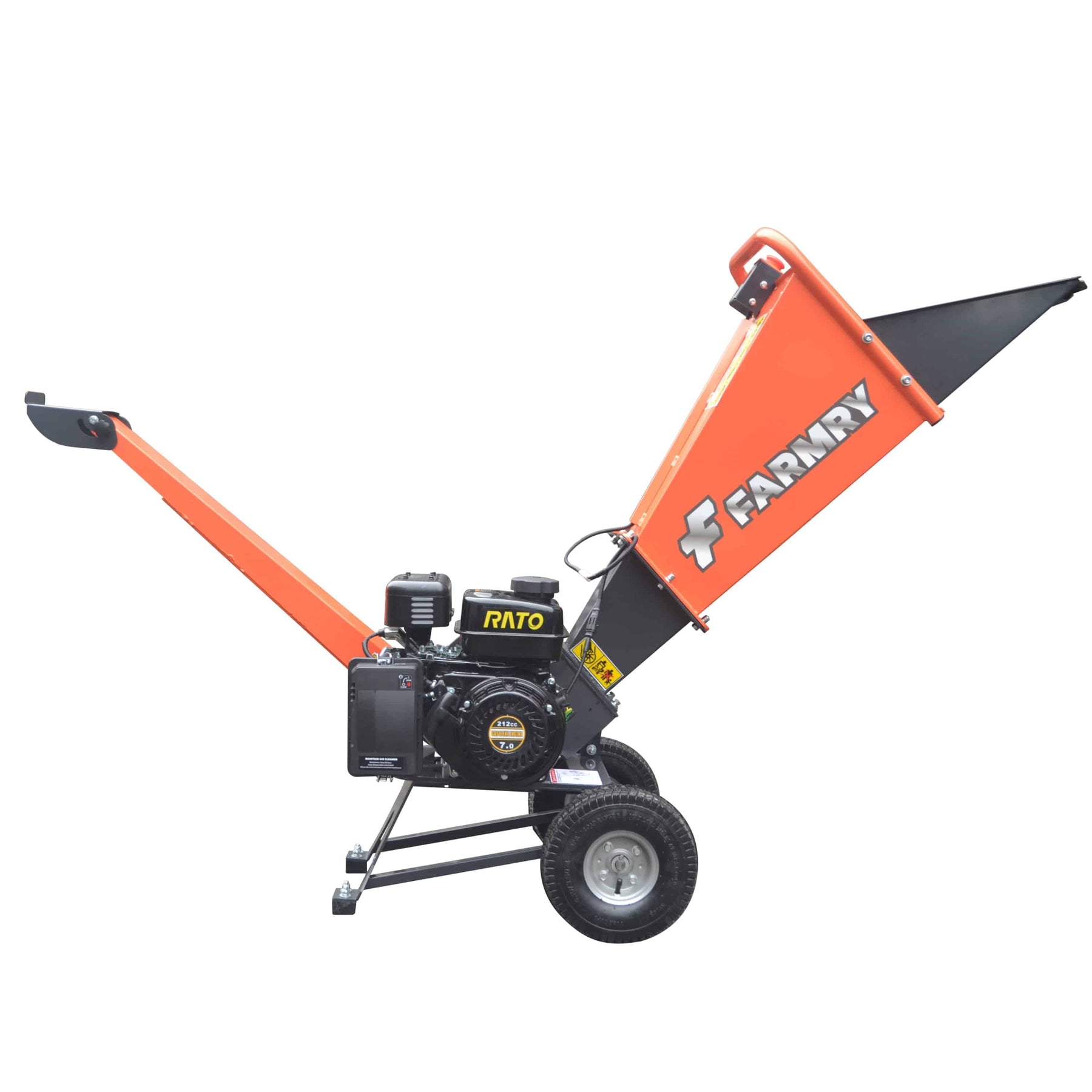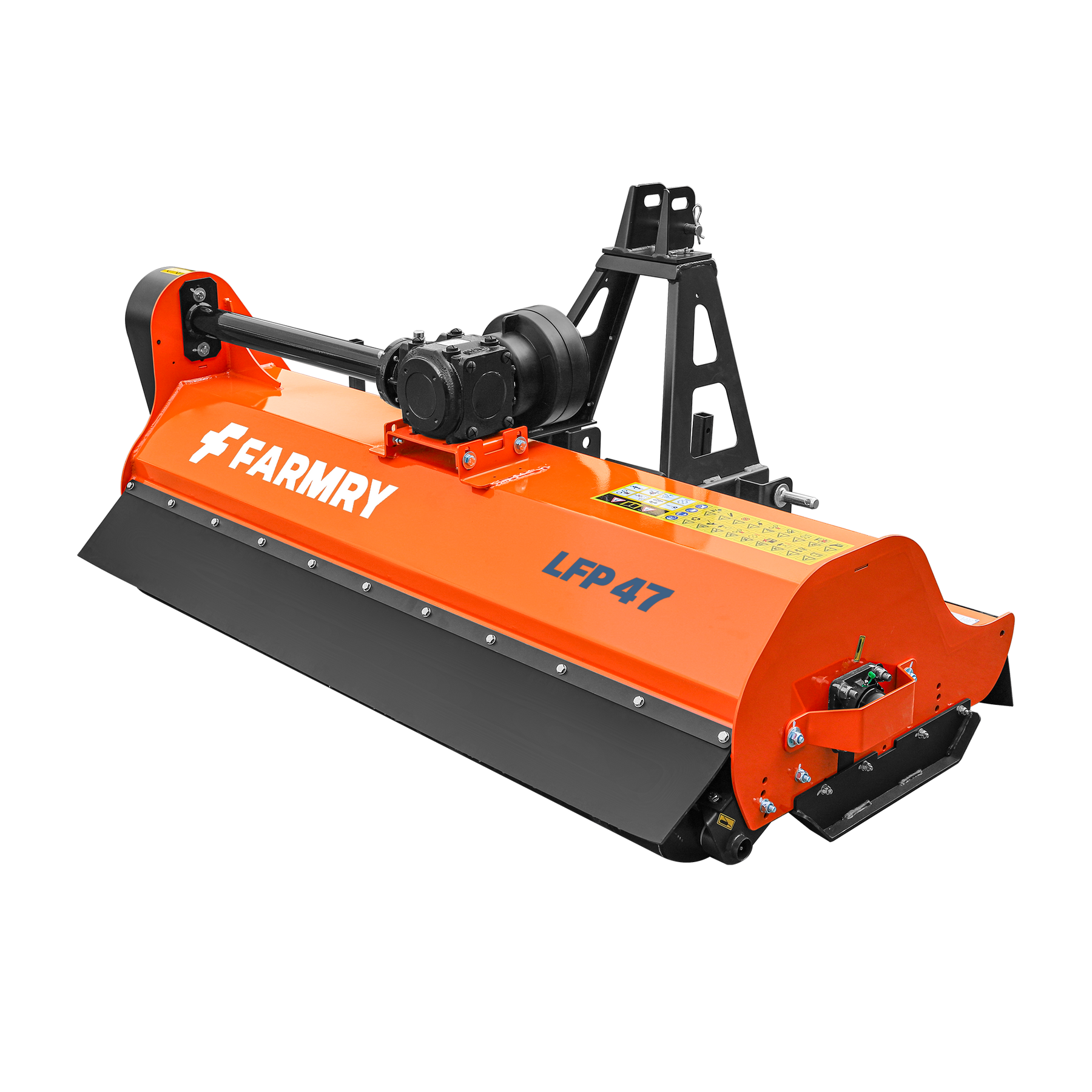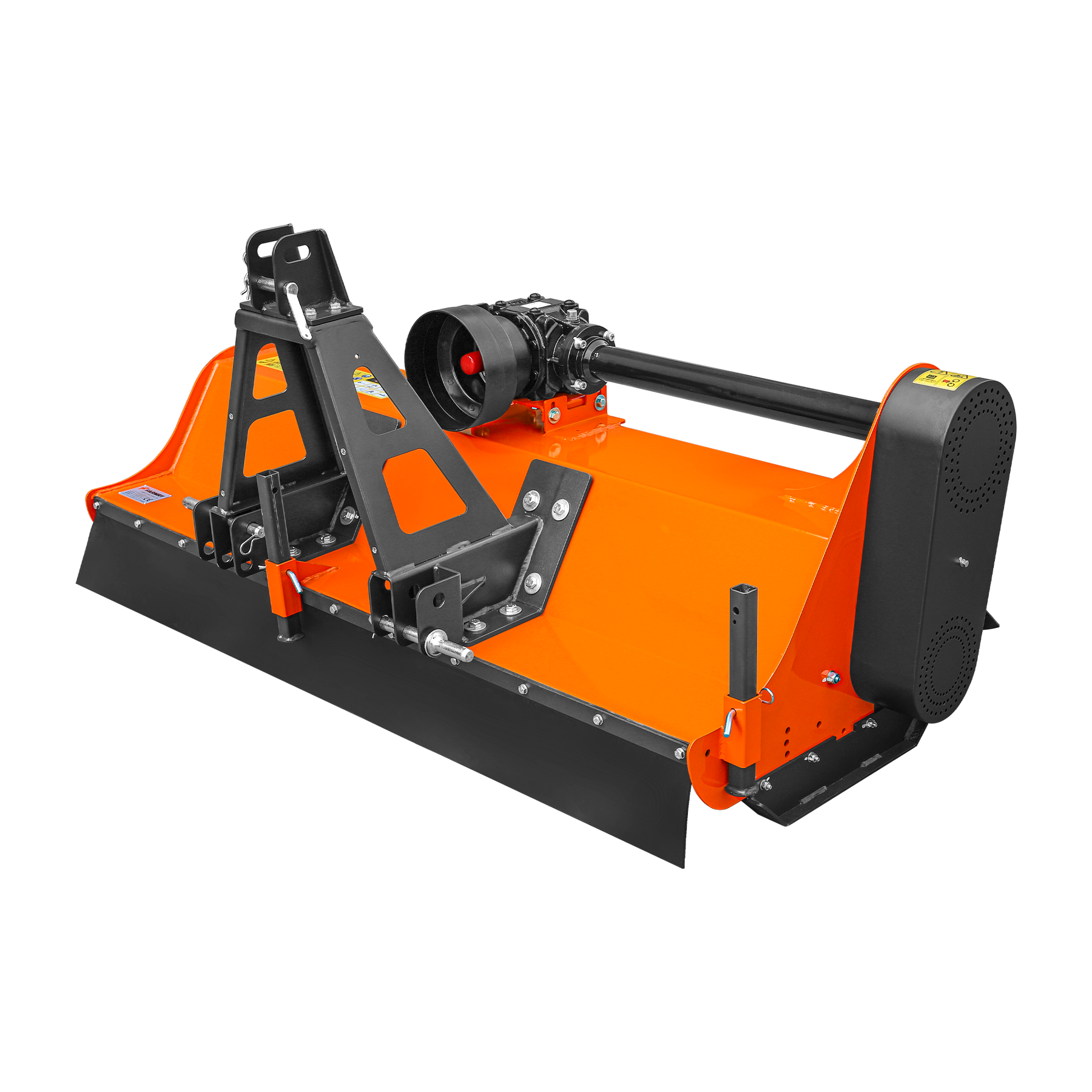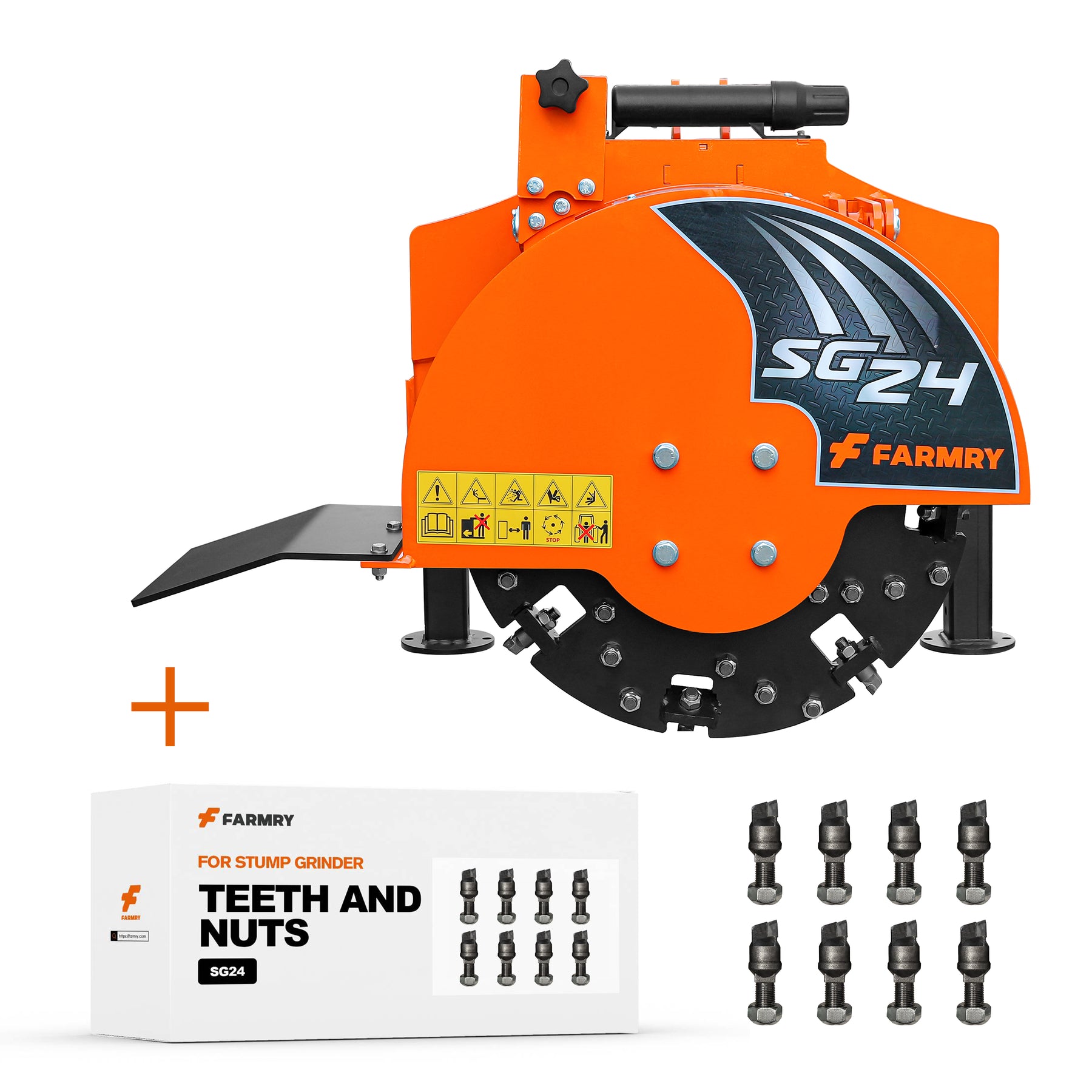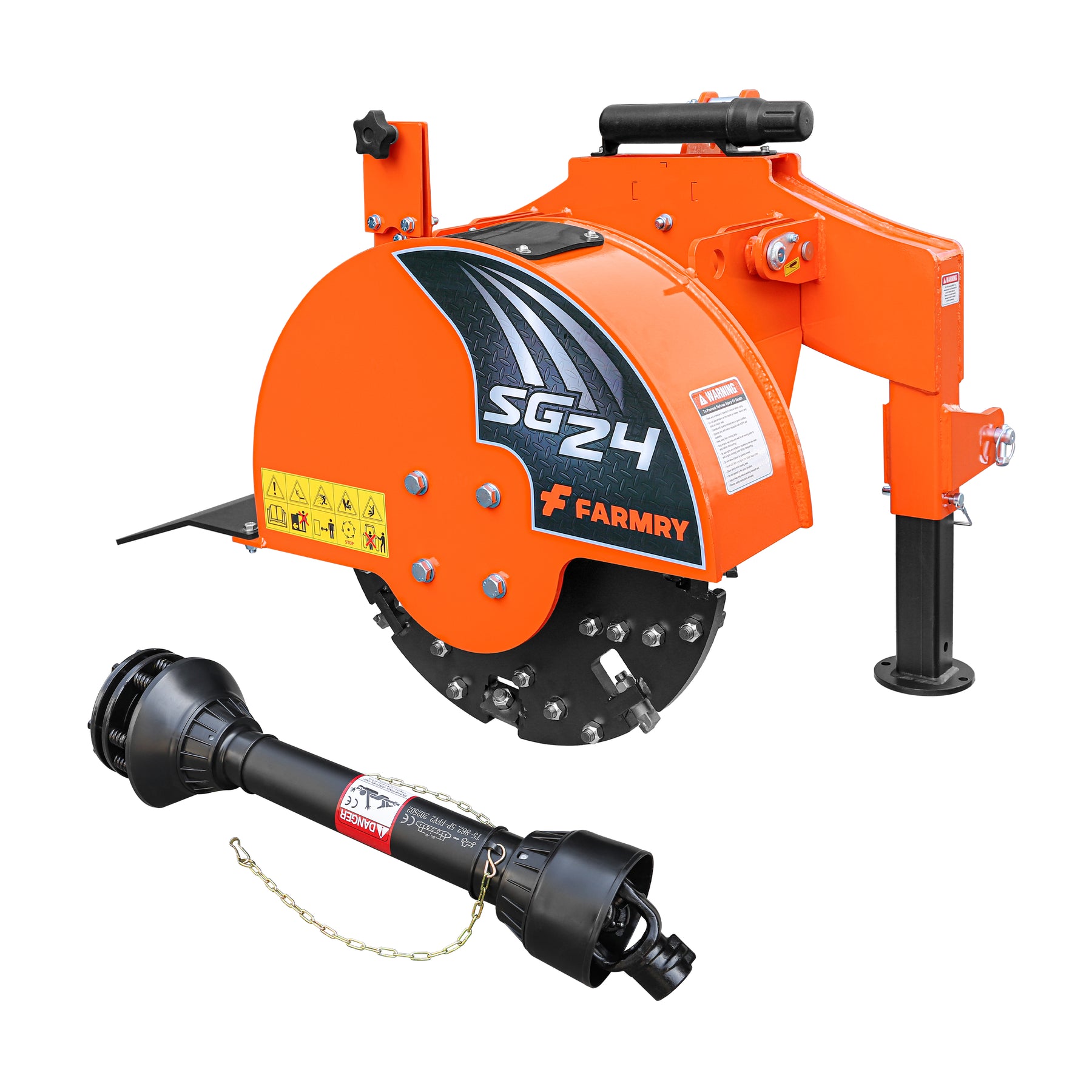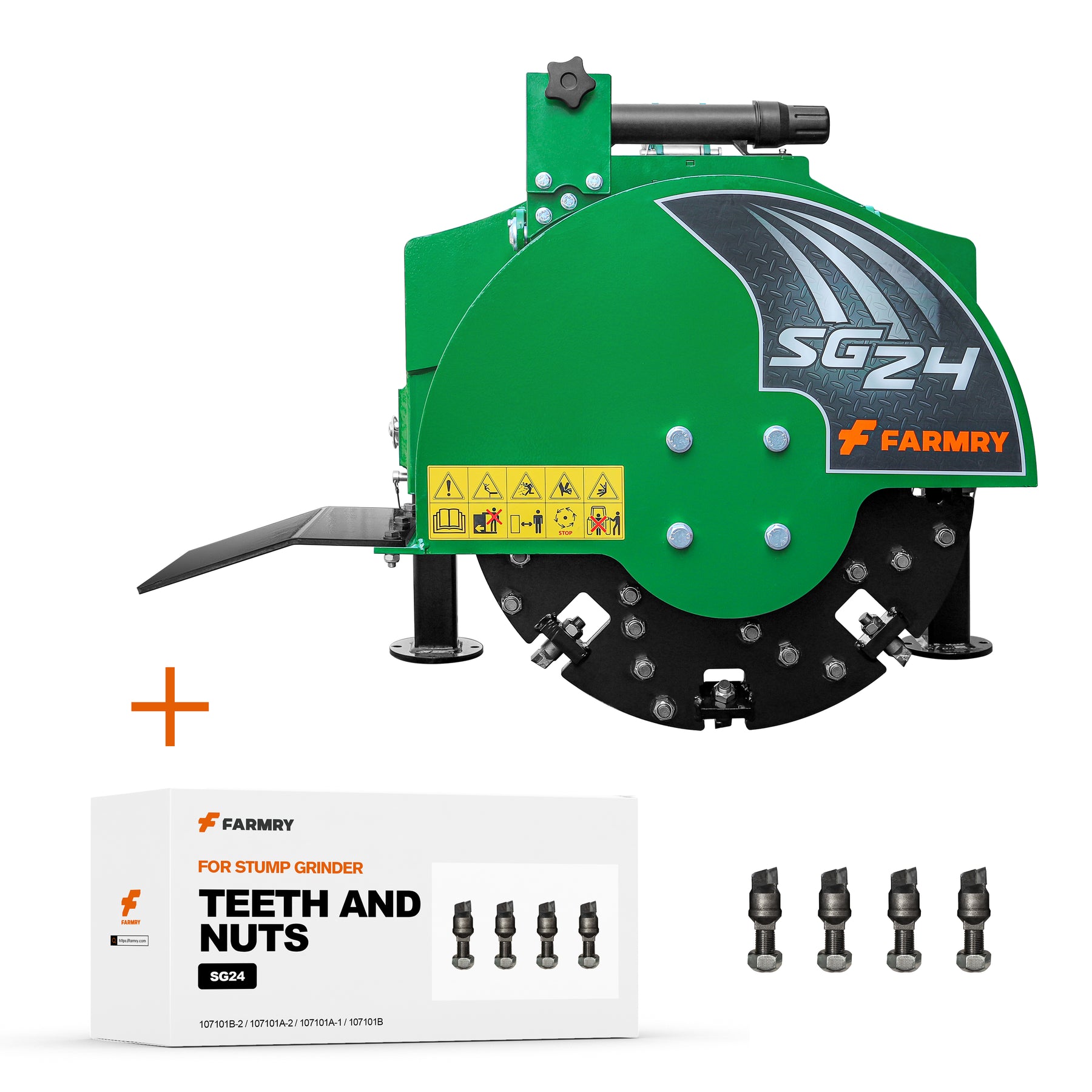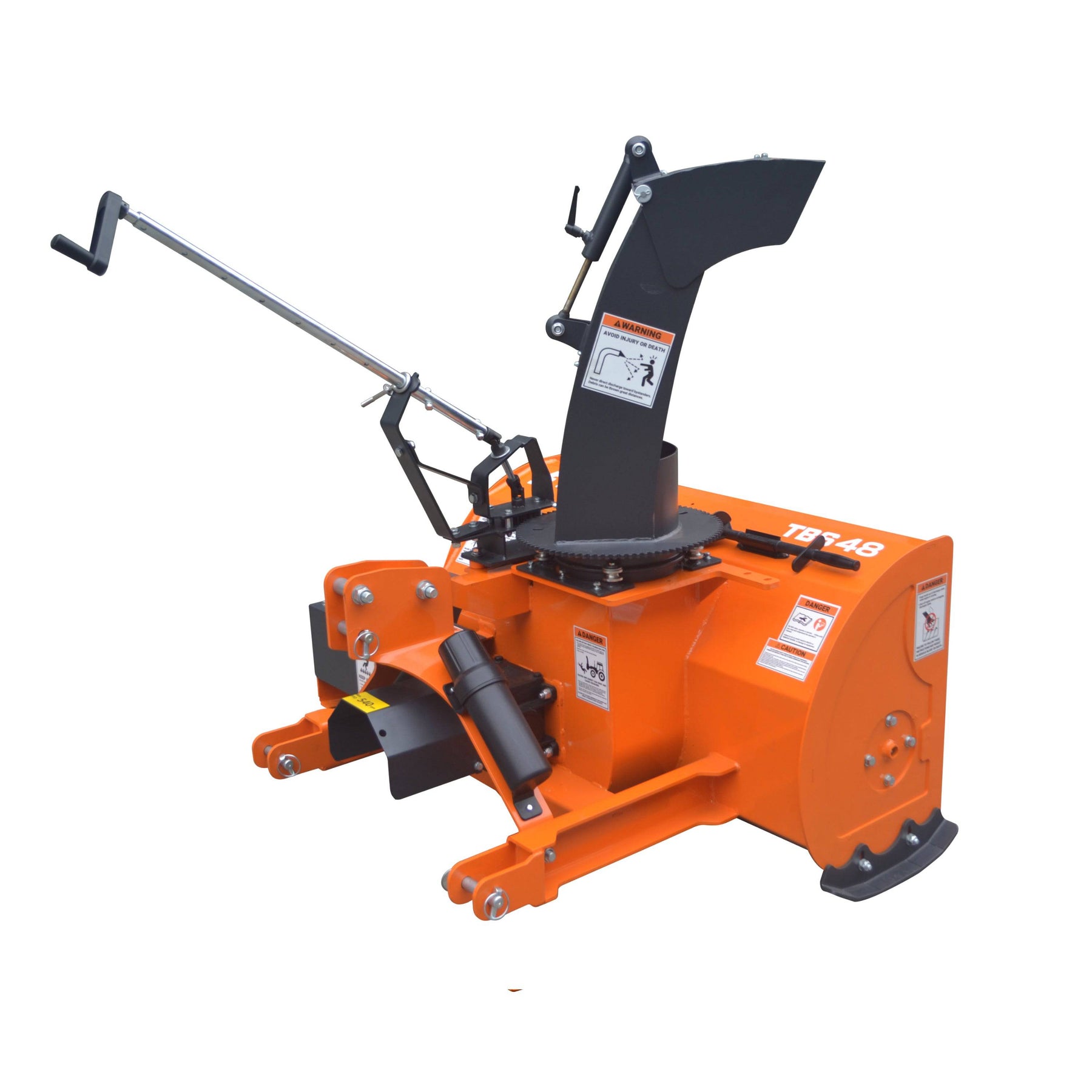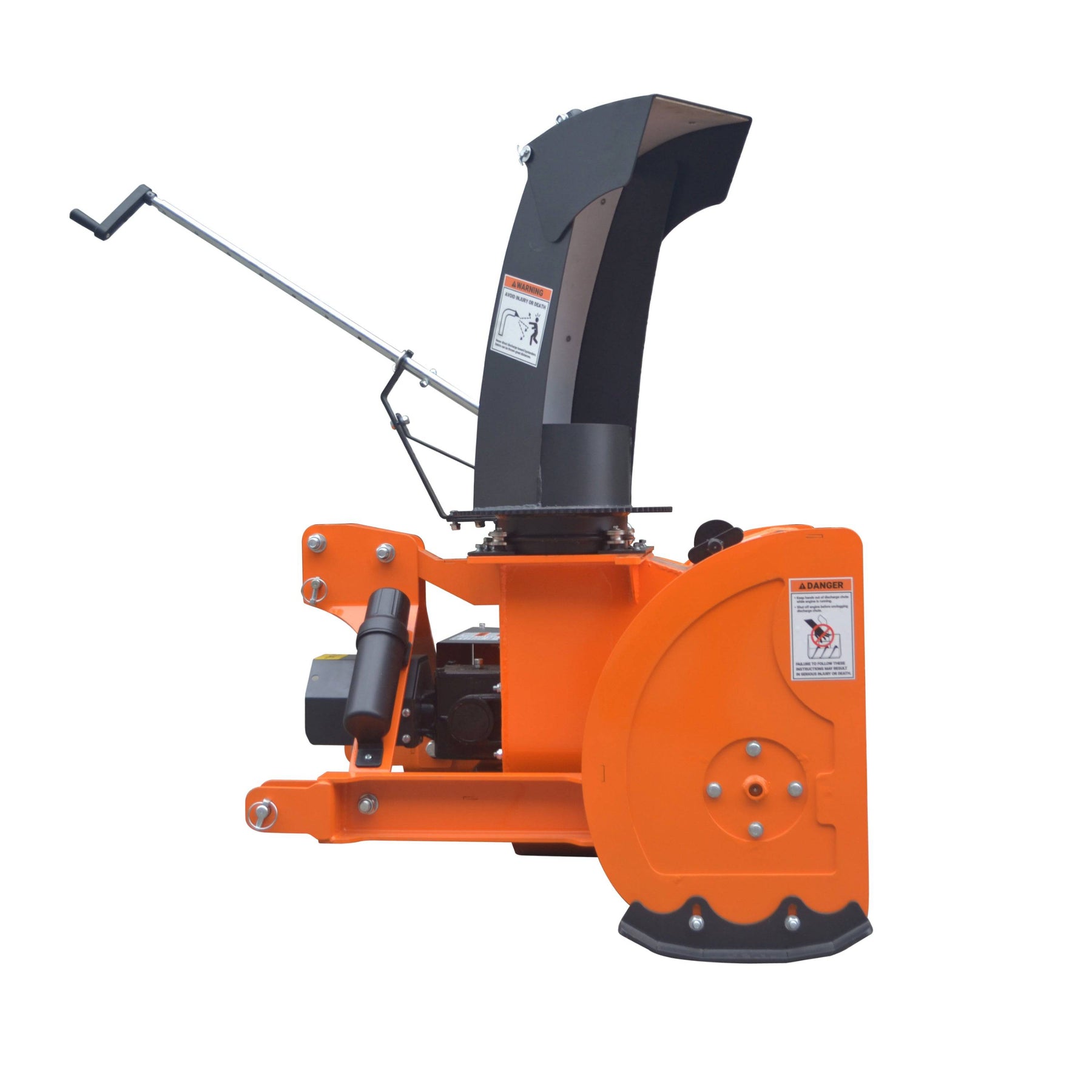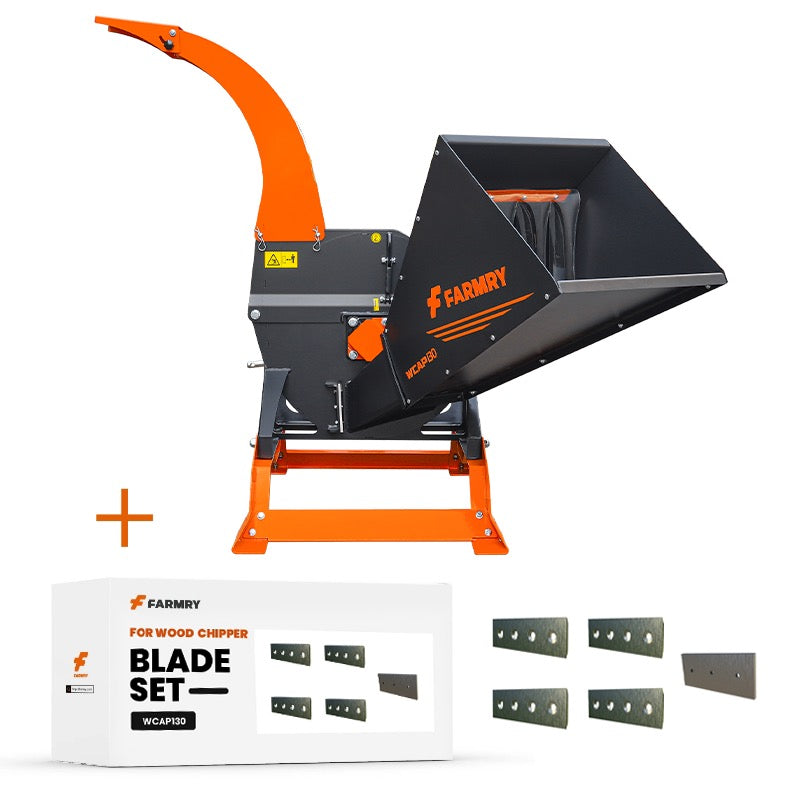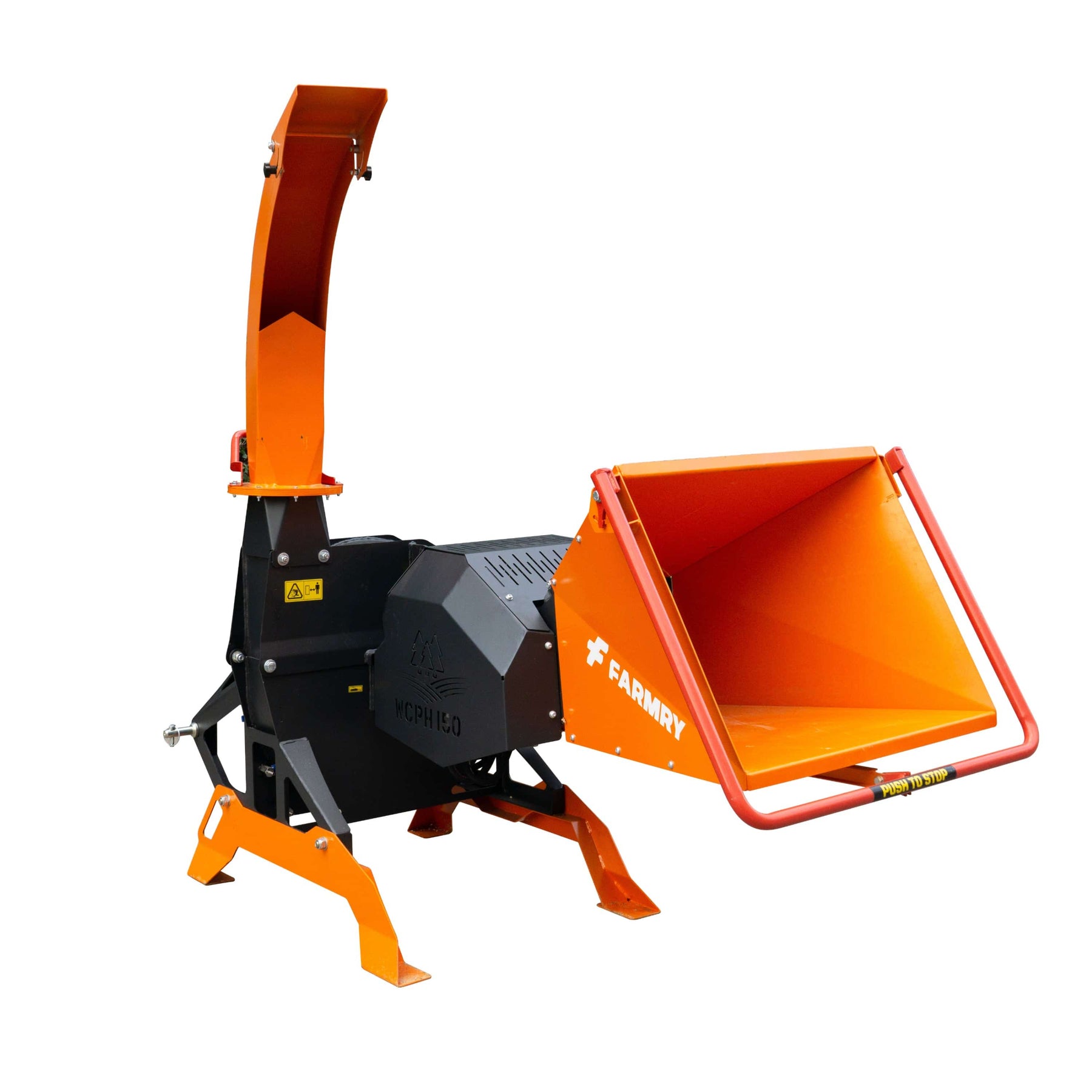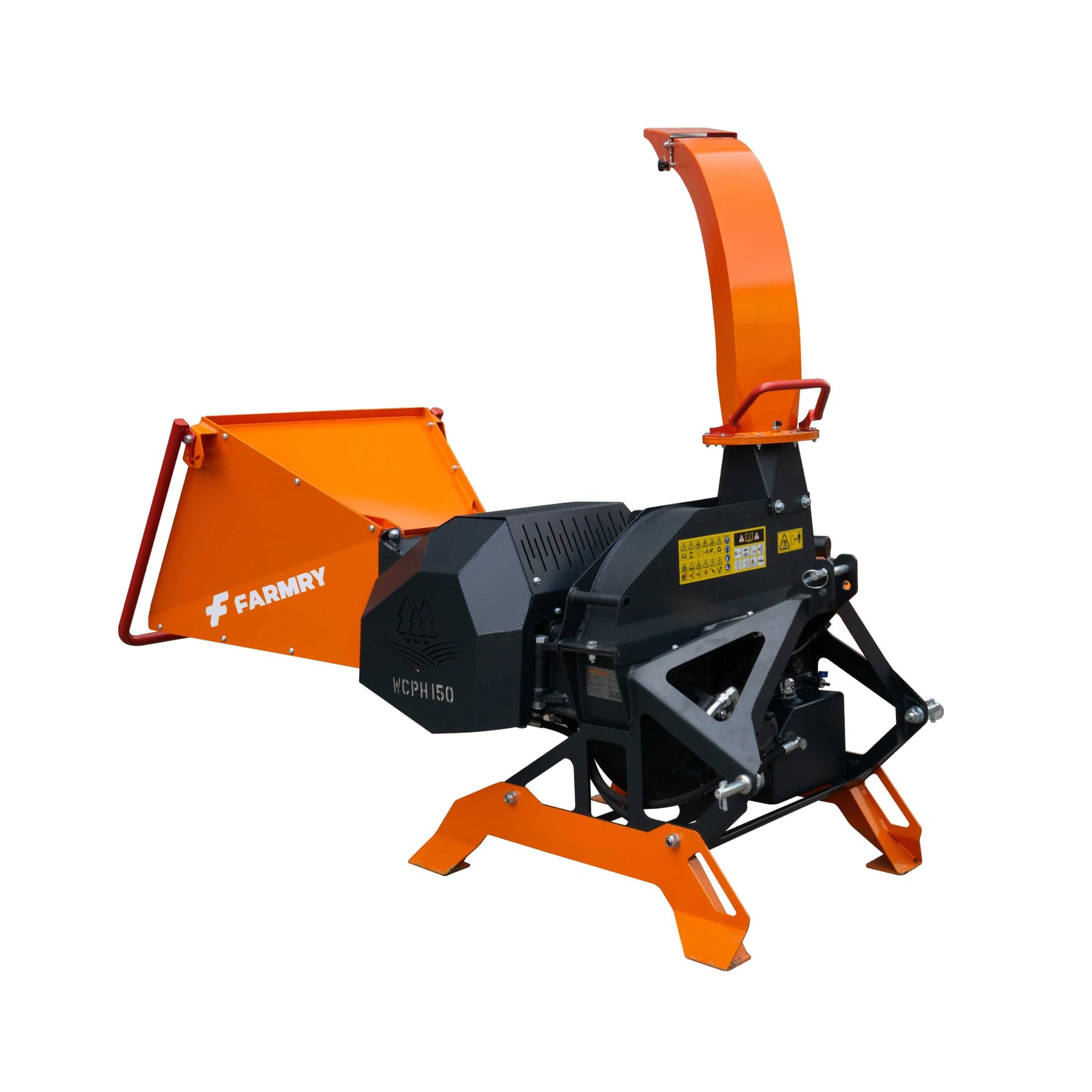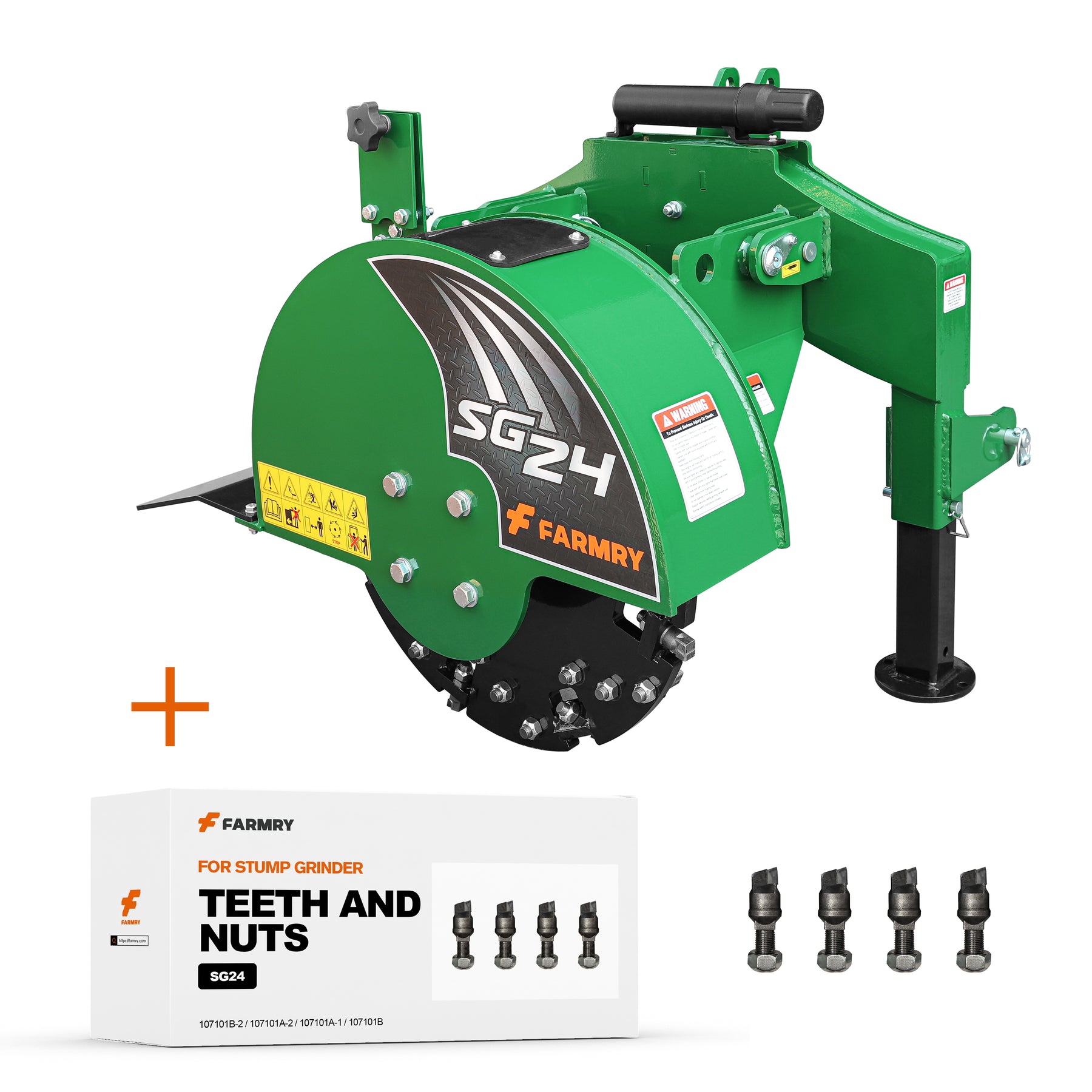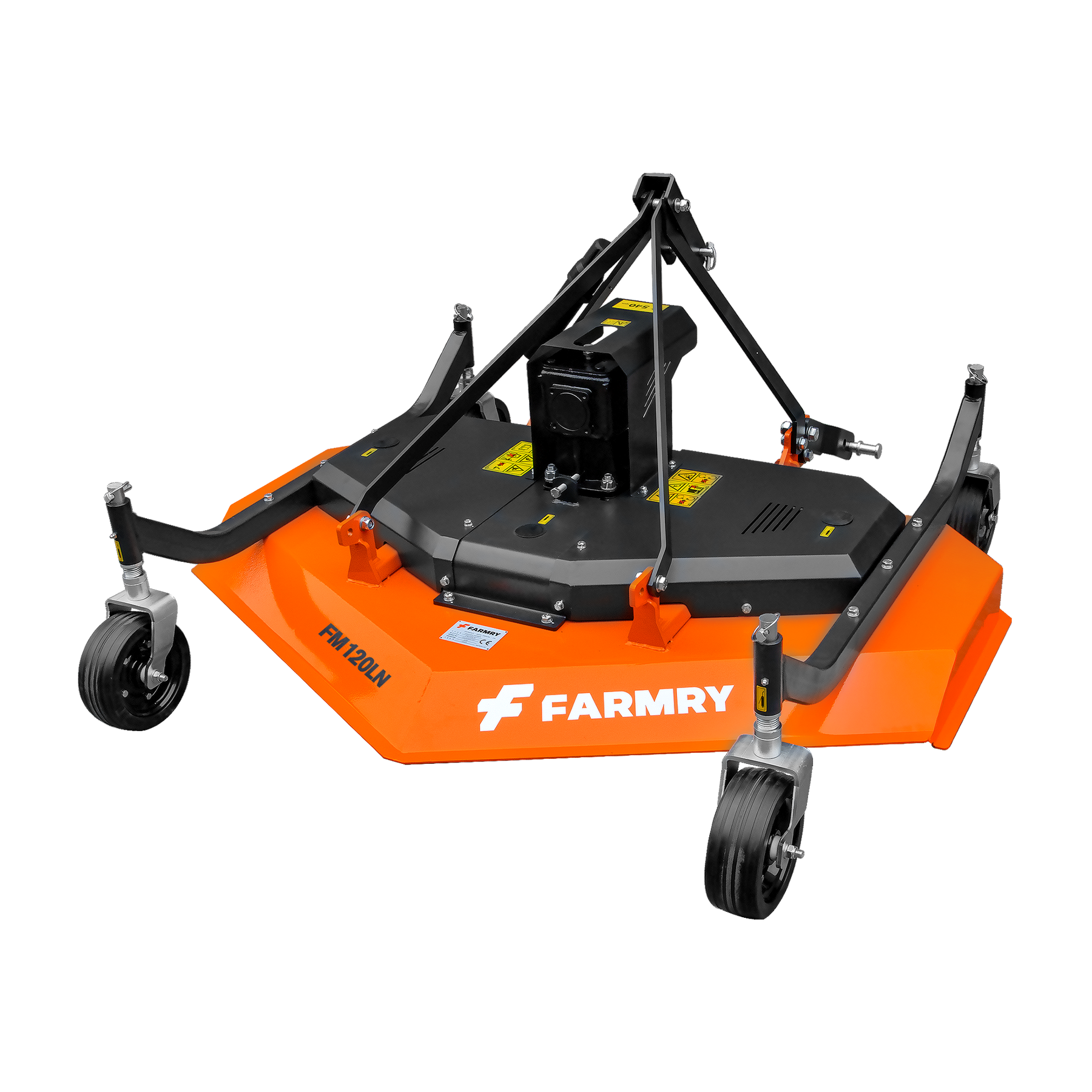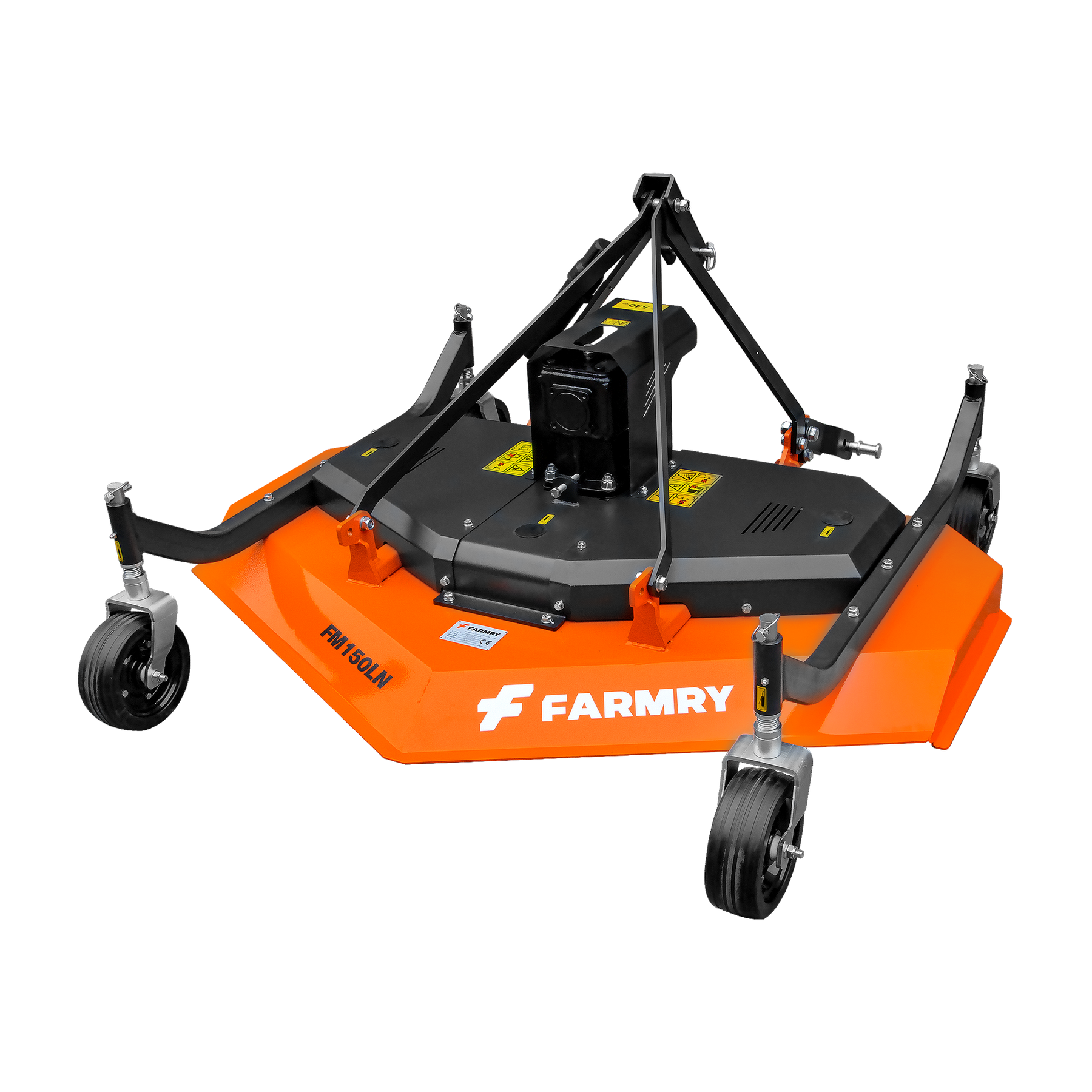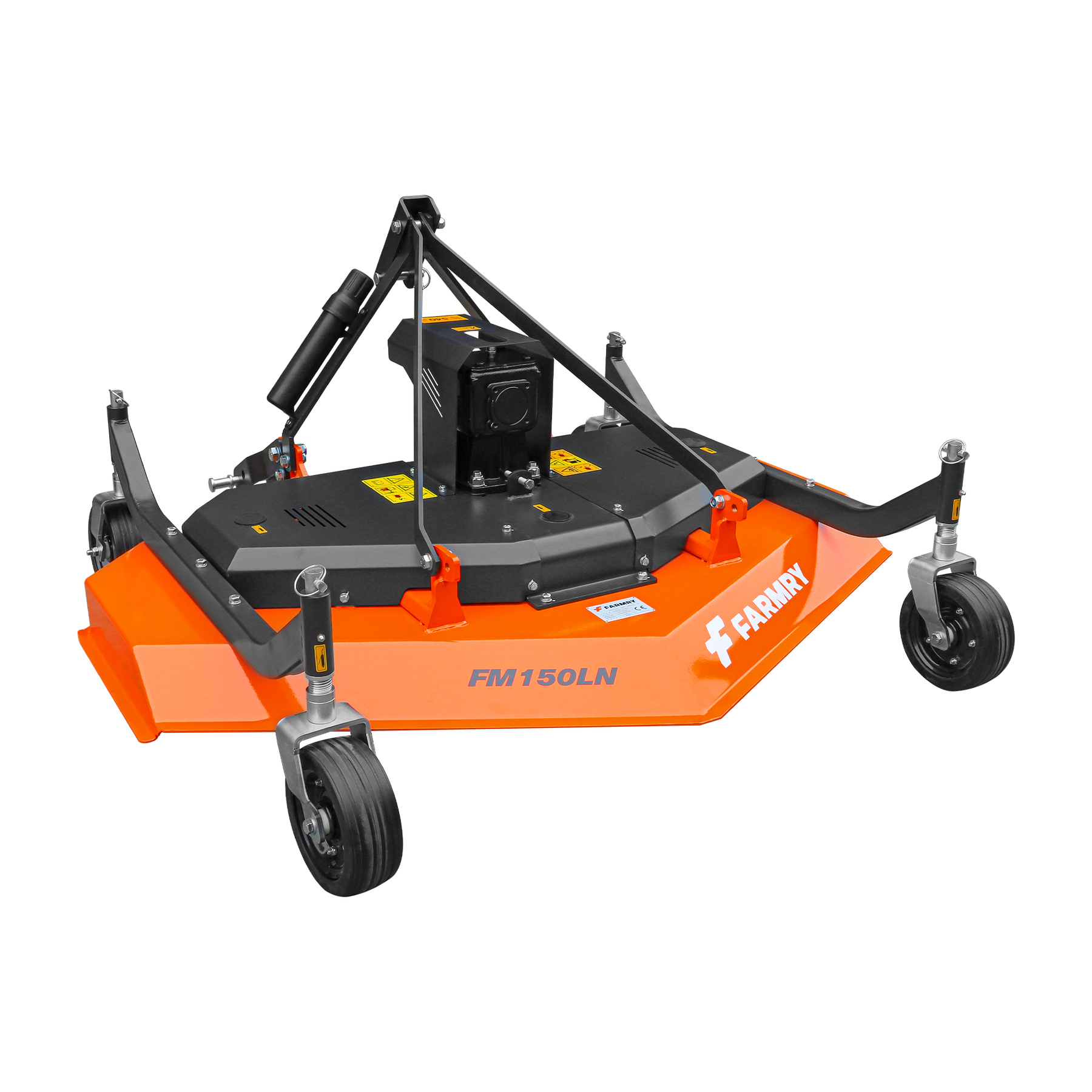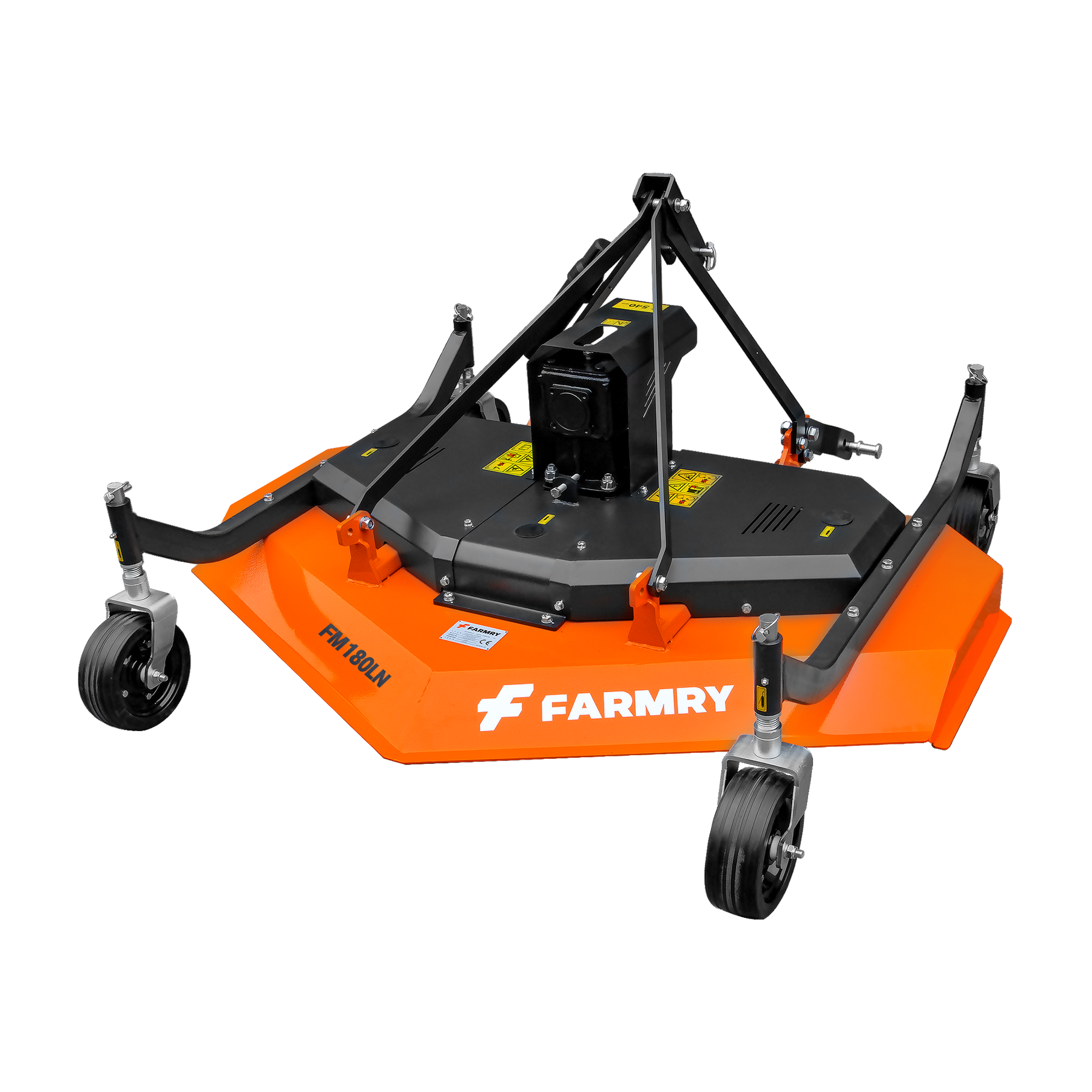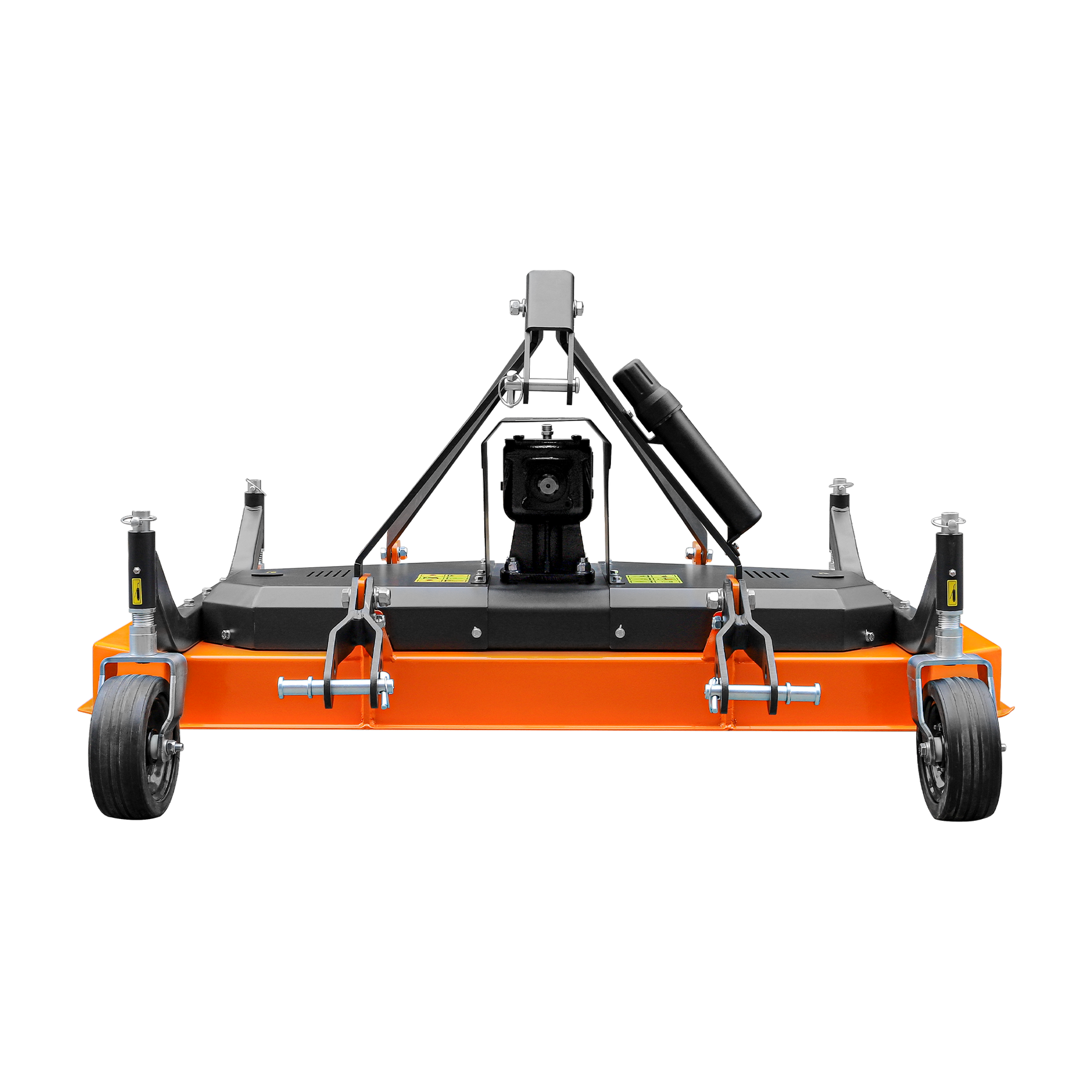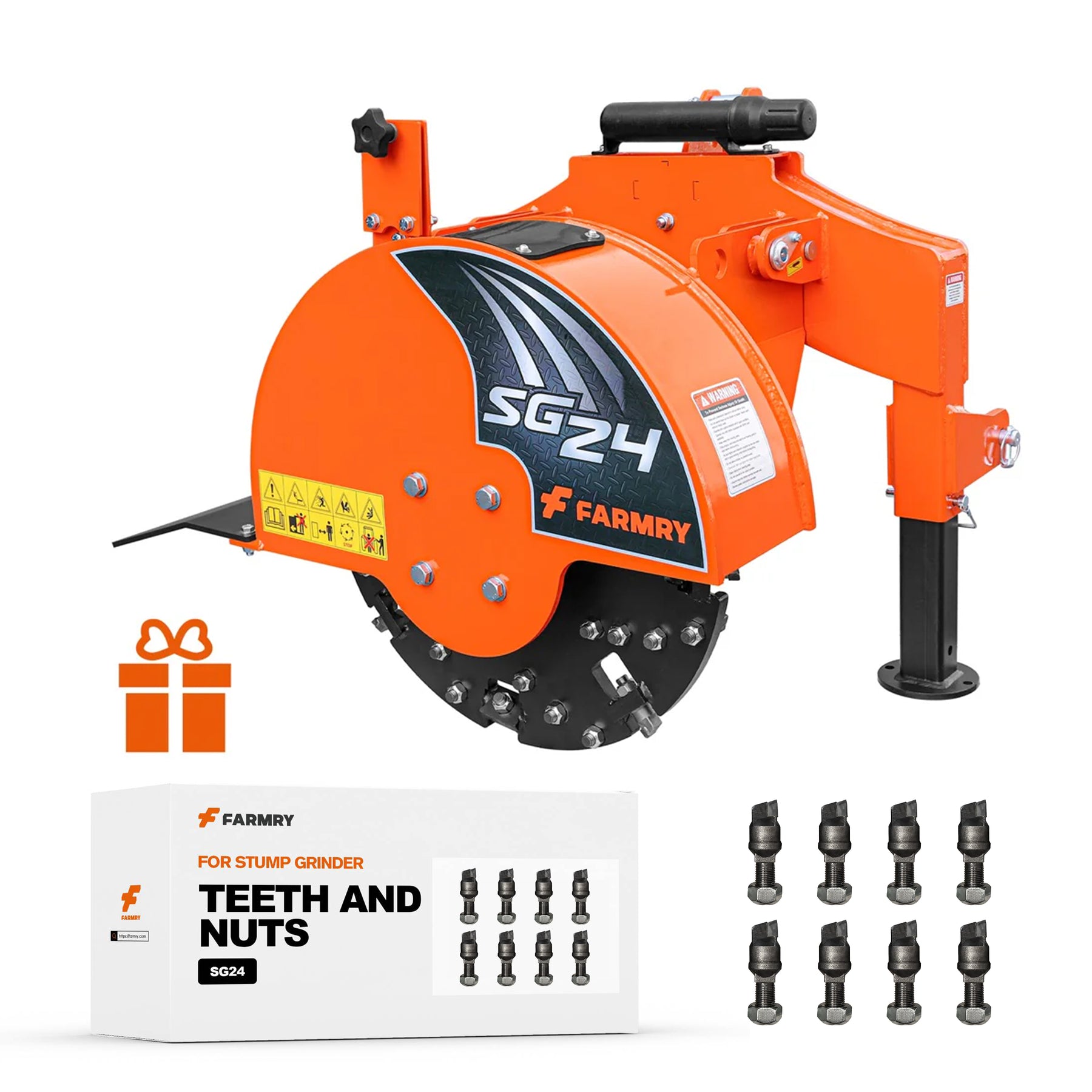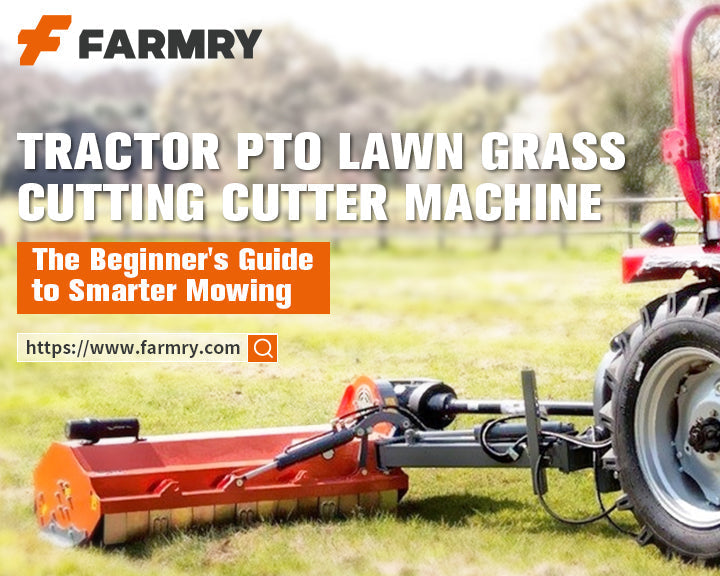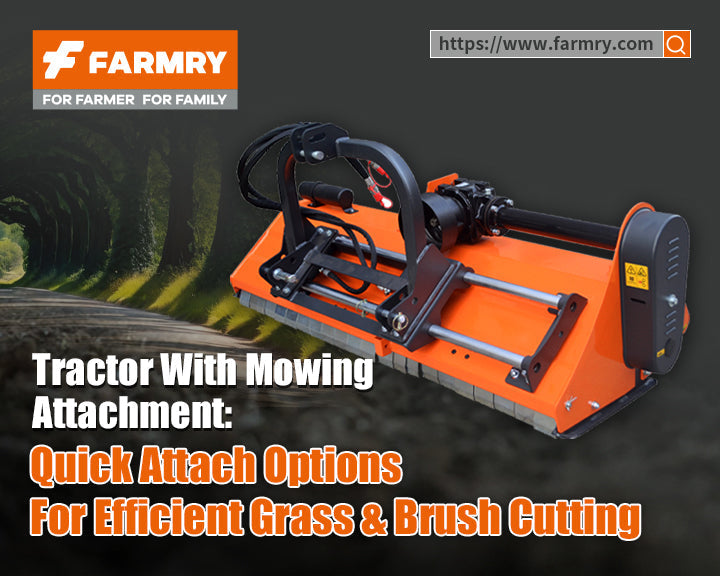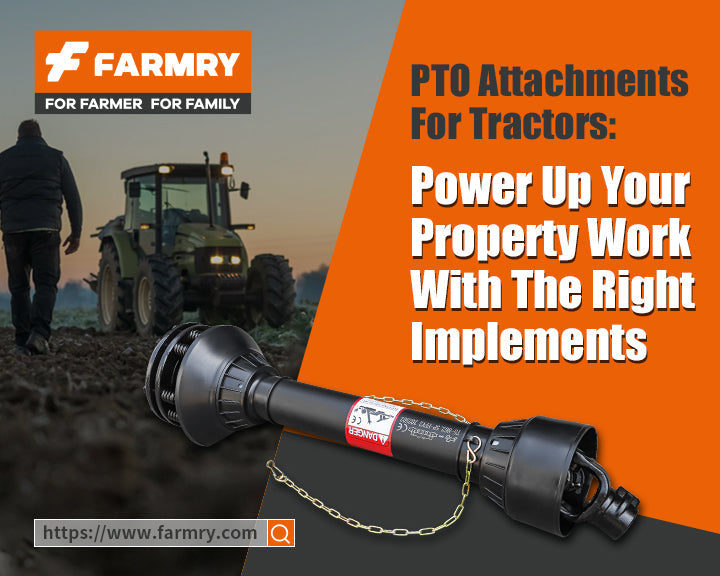3 point offset flail ditch bank mowers
you may also like
FAQ
1. What is an offset flail mower and how does a 3 point offset flail ditch bank mower work?
An offset flail mower is a type of heavy-duty mower built to manage overgrown grass, tall grass, and roadside brush on uneven terrain. Connected to the tractor via a 3 point hitch (compatible with Cat I and Cat II tractors), the mower features a hydraulic offset system that lets the cutting head swing outward or tilt up to 90 degrees. This makes it especially effective for maintaining ditch banks, fence lines, and embankments without repositioning the tractor. Compared to a brush hog, it provides cleaner results with less debris scattering.
2. Can a 3 point offset flail mower handle branches and rugged mowing conditions?
Yes. These flail mowers are equipped with durable hammer blades or optional Y blades capable of chopping through small branches, dense weeds, and overgrown grass. Combined with adjustable skid shoes and a floating design, they adapt to uneven ground without scalping. This makes them perfect for ditch bank mowing, orchard rows, and challenging roadside environments.
3. What type of tractor and hydraulics do I need to run an offset flail mower?
Your tractor should be rated between 35–90 HP and have a 3 point hitch setup (Cat I or Cat II tractors). A rear hydraulic outlet is essential to operate the hydraulic offset, allowing you to shift the mower head laterally for better reach in tight or sloped areas, such as along ditch banks or tree lines. This system is especially valuable when mowing at 90 degrees upward or downward on steep ground.
4. How do I choose the right size, weight, and cutting width for my needs?
Start by assessing your terrain and tractor capacity. Offset flail ditch bank mowers from Farmry range from 60" to 87" in cutting width and weigh between 800–1,200 lbs. Make sure your tractor has enough lift power and PTO strength for the mower. For properties with tall grass, overgrown vegetation, or roadside work, larger models with wider rear rollers and stronger rotor rotation are recommended for better coverage and cleaner results.
5. How do hammer blades and belts affect performance and maintenance?
Hammer blades are ideal for mulching thick brush and overgrown grass, while Y blades are better for lighter materials and producing a finer finish. Inside the mower, belts transfer PTO power to the drum, driving the blades through high-speed rotor rotation. Keeping the belts properly tensioned reduces slippage, noise, and wear, helping the mower cut cleanly and distribute mowed material evenly—even at steep hydraulic offset angles.
6. How is the mower head attached and secured for safety and stability?
The mowing head is mounted to the main frame using heavy-duty brackets, bolts, and steel reinforcements. This stable build ensures safety and balance when using the hydraulic offset function or mowing at 90 degrees on slopes or ditch banks. The integrated rear roller also supports consistent cutting height while preventing scalping or instability on uneven terrain, making this mower more secure than a traditional brush hog.

